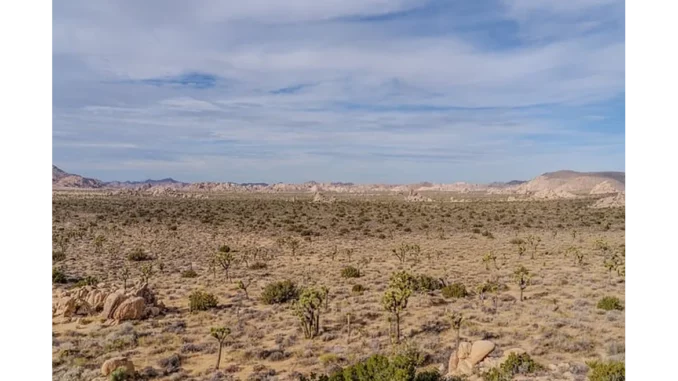
Transforming Your Garden with Succulents and Cacti: A Guide to Elegant and Sustainable Landscaping
Introducing succulents and cacti into your garden design can be both a stylish and sustainable choice, especially if you reside in an arid climate. These resilient plants offer an array of textures, shapes, and colours that can transform your outdoor space into a low-maintenance, visually captivating haven.
The Allure of Succulents and Cacti
Succulents and cacti are not only visually stunning but also tick the box for sustainable landscaping. Opting for native, drought-tolerant plants and sourcing local materials can significantly reduce water usage and environmental impact. By choosing plants that naturally co-exist in hot, dry regions, you ensure they will thrive together in your garden.
“Succulents offer endless design possibilities with their varied shapes and sizes, from tall columnar cacti to low-growing groundcovers,” says Noelle Johnson, horticulturist and author of Dry Climate Gardening. “Columnar cacti can serve as central focal points or be interspersed throughout the garden to create multiple vertical visual statements.”
Mastering Scale and Proportion
The beauty of succulents and cacti lies in their versatility. Large agave or yucca plants can serve as sculptural elements, while smaller varieties like echeveria and sedum add intricate details to rock gardens and living walls.
“Scale and proportion are crucial in landscape design,” advises Debra Lee Baldwin, author of Designing with Succulents. “A landscape with properly proportioned elements feels inviting. Correct scale can be as simple as placing small plants in small spaces and big plants in large spaces.”
Embracing Native Varieties
Restoring native plant habitats should be a key component of any new landscaping project. Native plants, like the prickly pear cactus, play a vital role in supporting local wildlife and maintaining biodiversity.
“Our coast prickly pear is native to Southern California and Baja California, where it thrives in coastal sage scrub and maritime chaparral,” explains Dr Ari Novy, president and CEO of the San Diego Botanic Garden. “This cactus stores water in its stems, allowing it to endure drought conditions while providing year-round beauty.”
Repetition for Cohesion
One effective design principle is the repetition of plants with similar foliage colour and texture to create a cohesive landscape.
“Succulents, with their distinctly pointed, oval, or cylindrical leaf shapes, offer opportunities for crisply defined repetitions of form,” says Debra Lee Baldwin. “Just three strategically placed agaves can lend continuity to a garden regardless of its other components.”
Adding Colour and Contrast
Colourful succulents and cacti can elevate your garden design, offering vibrant hues and stunning blooms.
“Succulents with colourful foliage make an unforgettable display when grown en masse,” says Debra Lee Baldwin. “When juxtaposed with other boldly-hued plants, the contrast is as dramatic as it is delightful.”
Horticulturist Jac Semmler, author of Super Bloom, highlights the versatility of sedum: “Their leaves vary in shades of blue, green, grey, purple, and even gold. Sedums are a wondrous combination of resilience and beauty, with flowers that attract pollinators.”
Integrating Boulders and Rocks
Incorporating boulders, crushed stones, and pebbles into your design adds visual interest and depth, moving away from a flat, desert-like appearance.
“Boulders serve as great visual anchors for plants,” notes Noelle Johnson. “Pairing a boulder with a plant enhances the mixture of heights and textures, adding a dynamic element to your landscape.”
Creating Bold Silhouettes
Transform plain walls or fences into design features with displays of tall, columnar cacti or shapely succulents.
“The shadows that plants cast can add another layer of interest to your garden,” says Noelle Johnson. “Curved and spiky shapes create beautiful shadows on vertical surfaces, transforming bare walls.”
Choosing Gravel for Versatility
Gravel is a practical and aesthetically pleasing choice for dry climate landscaping. It can be used in various ways, from modern geometric designs to top-dressing flower beds.
“Pea gravel is a favourite among garden designers for its professional finish,” says Noelle Johnson. “Its small, smooth stones come in natural colours that blend seamlessly with any landscape.”
Crafting Container Displays
If space is limited, potted succulents and cacti can create a mini-landscape on patios, balconies, or roof gardens. These low-maintenance plants thrive in containers and can be arranged to complement each other.
“Containers can transform an urban balcony into an inviting, easy-care garden space,” says Debra Lee Baldwin. “Succulents need minimal pruning, grow slowly in confined roots, and are ideal for areas with limited water availability.”
FAQs: Can Cacti and Succulents Be Planted Together?
Yes, cacti and succulents thrive together in sunny, dry, well-drained conditions. When planting them together, consider their water requirements to ensure optimal growth.
For more inspiration on drought-tolerant landscaping and creating a sustainable, beautiful yard, explore additional resources and expert advice.


Be the first to comment